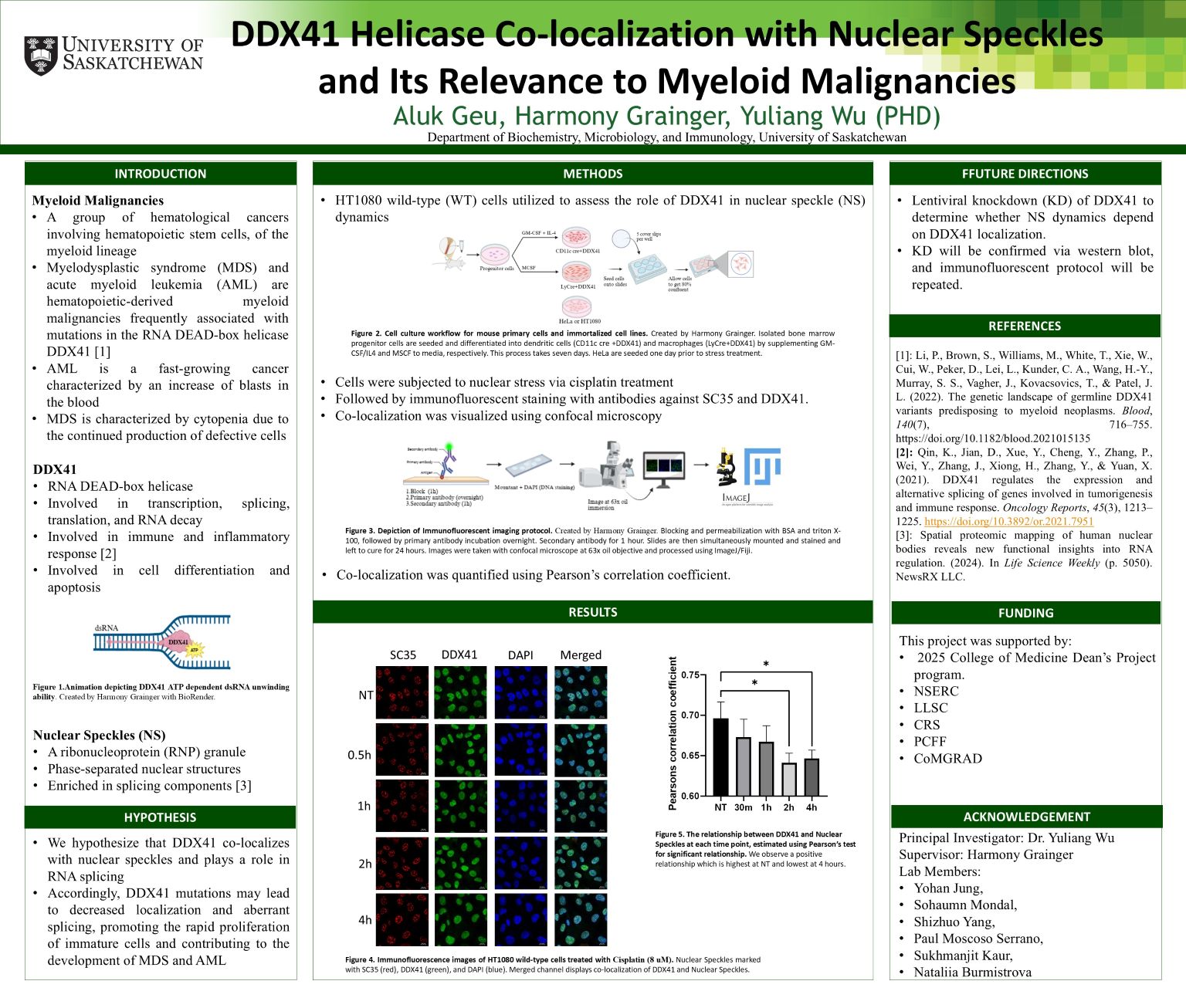
DDX41 Helicase Co-localization with Nuclear Speckles and Its Relevance to Myeloid Malignancies
Aluk Geu
Myelodysplastic Syndrome (MDS) and Acute Myeloid Leukemia (AML) are hematopoietic-derived myeloid malignancies frequently associated with mutations in the RNA DEAD-box helicase DDX41. Previous work in the Wu lab has investigated the molecular pathogenesis of DDX41 mutations by examining cytoplasmic ribonucleoprotein (RNP) granule dynamics, specifically processing bodies (P-bodies, PBs) and stress granules (SGs). Given that DDX41 is primarily localized in the nucleus, we have expanded our investigation of RNP granules to include nuclear speckles (NS), which are phase-separated nuclear structures enriched in splicing components. We hypothesize that DDX41 co-localizes with nuclear speckles and plays a role in RNA splicing. Accordingly, DDX41 mutations may lead to decreased localization and aberrant splicing, promoting the rapid proliferation of immature cells and contributing to the development of MDS and AML. To investigate our hypothesis, we first utilized HT1080 wild-type (WT) cells to assess the role of DDX41 in nuclear speckle (NS) dynamics. Cells were subjected to nuclear stress via cisplatin treatment, followed by immunofluorescent staining with antibodies against SC35 and DDX41. Co-localization was visualized using confocal microscopy and quantified using Pearson’s correlation coefficient. We observed that DDX41 positively correlates with SC35, and its localization to nuclear speckles decreases over the course of stress treatment.
